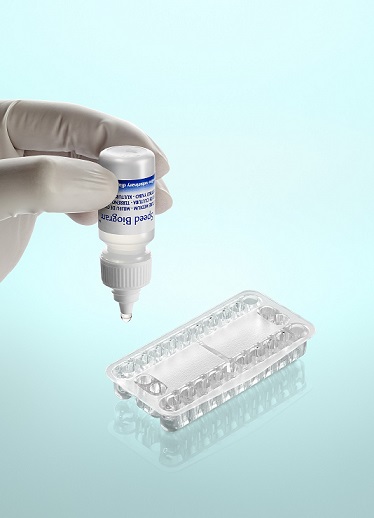Speed Biogram
Identification of bacteria (+ yeasts) and antibiotic sensitivity for cutaneous, auricular and urinary infections
| Presentation | Advantages | |||||
|---|---|---|---|---|---|---|
|
Method: Mini culture tray Analysis: 7 bacteria:
15 antibiotic molecules
Preparation:3 minutes Reading: Antibiogram: 24 h, Identification: 48 h Storage: 16 months between 2°C and 8°C Presentation: 5 tests Reliability: Compared with the reference method, culture on Mueller-Hinton medium |
|
| Why to use Speed Biogram ? |
|---|
|
The demonstration of the results to the owner will facilitate compliance to the prescribed treatment (3). |
| When to use Speed Biogram ? |
|---|
|
The use of Speed Biogram is indicated in dermatology in cases of pyodermatitis or otitis. Speed Biogram is ideal for the bacteriological examination of urine, for all urinary infections. Speed Biogram can be used in first intention or after therapeutic failure to adapt the treatment. |
Instructions for use
Bibliography:
(1) PAPIEROK G, LESAINE C. 23ème Réunion Interdisciplinaire de Chimiothérapie Anti Infectieuse, Paris, Décembre 2003
(2) IHRKE PJ. Bacterial skin disease in the dog: a guide to canine pyoderma. Veterinary learning Systems Kansas USA, 1996.
(3) MADIN F. Nouvelles techniques d’analyses microbiologiques rapides utilisables par et pour le praticien, Congrès CNVSPA, Novembre 1995


 The causative organisms in dermatological or urinary infections, are variable (bacteria, yeasts) and associations are common(2). The empirical antimicrobial use is associated with the risk of therapeutic failure and contributes to the rising of resistant strains.
The causative organisms in dermatological or urinary infections, are variable (bacteria, yeasts) and associations are common(2). The empirical antimicrobial use is associated with the risk of therapeutic failure and contributes to the rising of resistant strains.